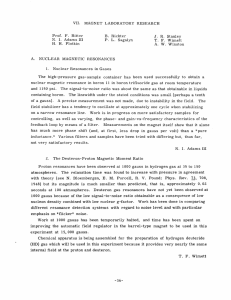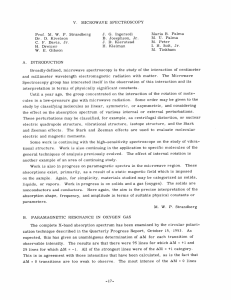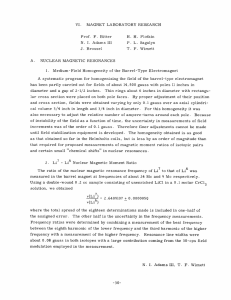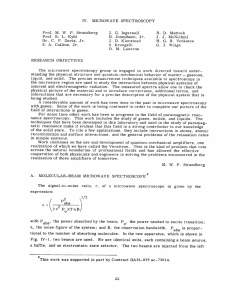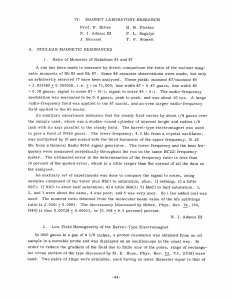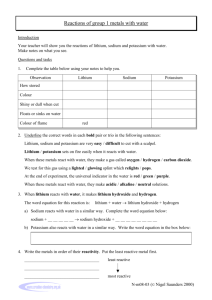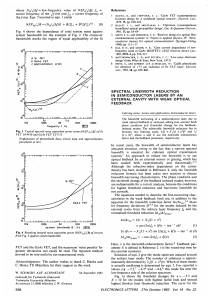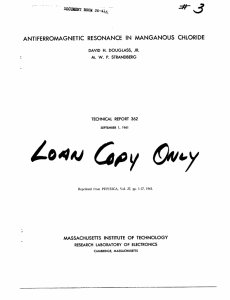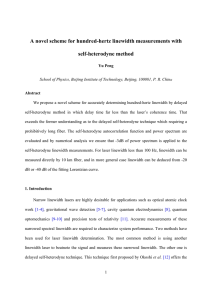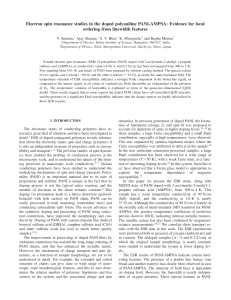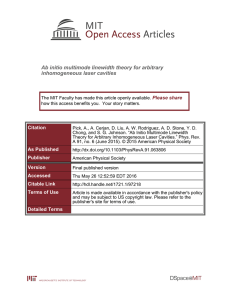V. MICROWAVE SPECTROSCOPY B. Josephson, Jr.
advertisement
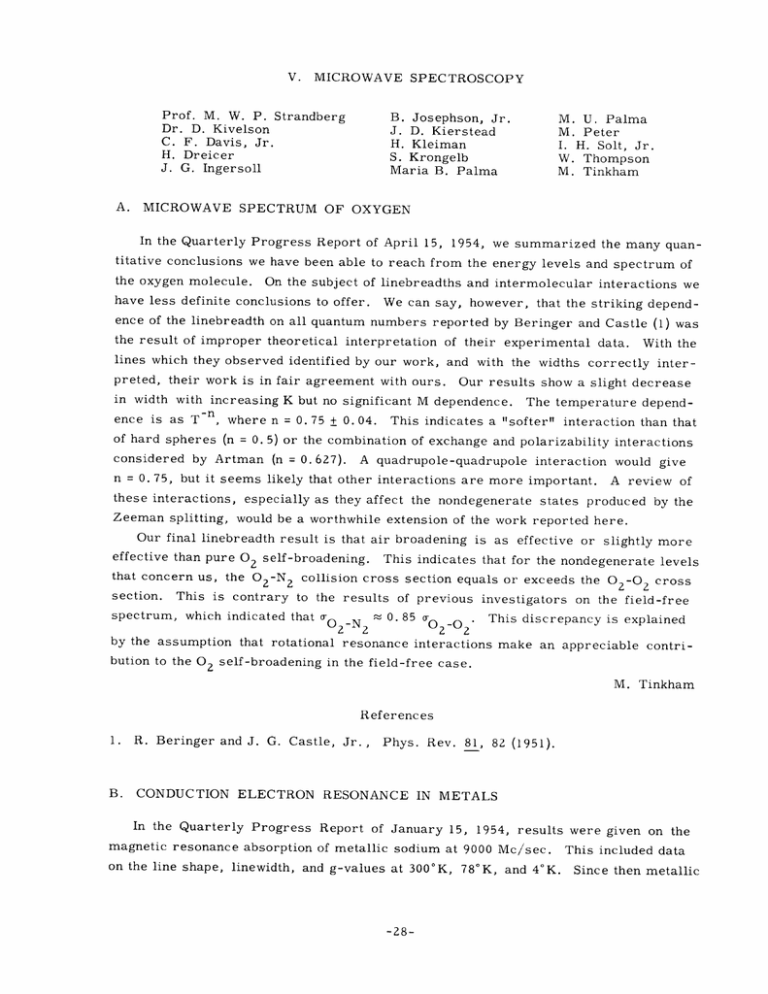
V. MICROWAVE SPECTROSCOPY Prof. M. W. P. Strandberg Dr. D. Kivelson C. F. Davis, Jr. H. Dreicer J. G. Ingersoll A. MICROWAVE B. Josephson, Jr. J. D. Kierstead H. Kleiman S. Krongelb Maria B. Palma M. U. Palma M. Peter I. H. Solt, Jr. W. Thompson M. Tinkham SPECTRUM OF OXYGEN In the Quarterly Progress Report of April 15, 1954, we summarized the many quantitative conclusions we have been able to reach from the energy levels and spectrum of the oxygen molecule. On the subject of linebreadths and intermolecular interactions we have less definite conclusions to offer. We can say, however, that the striking dependence of the linebreadth on all quantum numbers reported by Beringer and Castle (1) was the result of improper theoretical interpretation of their experimental data. With the lines which they observed identified by our work, and with the widths correctly interpreted, their work is in fair agreement with ours. Our results show a slight decrease in width with increasing K but no significant M dependence. ence is as T -nn - , where n = 0. 75 + 0. 04. The temperature depend- This indicates a "softer" interaction than that of hard spheres (n = 0. 5) or the combination of exchange and polarizability interactions considered by Artman (n = 0. 627). A quadrupole-quadrupole interaction would give n = 0. 75, but it seems likely that other interactions are more important. A review of these interactions, especially as they affect the nondegenerate states produced by the Zeeman splitting, would be a worthwhile extension of the work reported here. Our final linebreadth result is that air broadening is as effective or slightly more effective than pure 0 2 self-broadening. This indicates that for the nondegenerate levels that concern us, the O2-N 2 collision cross section equals or exceeds the 02-O cross Z section. This is contrary to the results of previous investigators spectrum, which indicated that 0O2-N Z on the field-free 0.85 O 2-0 . This discrepancy is explained by the assumption that rotational resonance interactions make an appreciable contribution to the 02 self-broadening in the field-free case. M. Tinkham References 1. R. Beringer and J. G. Castle, Jr., B. Phys. Rev. 81, 82 (1951). CONDUCTION ELECTRON RESONANCE IN METALS In the Quarterly Progress Report of January 15, 1954, results were given on the magnetic resonance absorption of metallic sodium at 9000 Mc/sec. This included data on the line shape, linewidth, and g-values at 3000K, 28- 780K, and 4 0 K. Since then metallic (V. lithium and potassium have been investigated. MICROWAVE SPECTROSCOPY) As in sodium, colloidal suspensions of lithium and potassium were made by ultrasonically dispersing the metals in paraffin wax. For lithium,-an asymmetric line shape similar to that of sodium was observed, the line shape being proportional to the sum of the real and imaginary parts of the susceptibility. The linewidth (corresponding to the full width at the half-power points of the imaginary part of the susceptibility) differed from sodium in that it temperature-independent. Its value is approximately 2.7 gauss. are g = 2. 0024 + 0. 0001 at 300 0 K, For potassium dependent. the linewidth was essentially The observed g-values and g = 2. 0022 + 0. 0001 at 78°K and 4°K. was At 300 0K it was 254 gauss; considerably broader at 78°K, 90 gauss; and was and at 4°K, temperature32.7 gauss. have so far been unable to get any accurate measurements of the g-value. 78°K the linewidth is too broad. However, it is I 0 At 300 K and hoped that at 4°K sufficient accuracy can be obtained with the narrow line. With these g-value measurements and temperature dependences of the linewidths, one can then establish whether the latter phenomenon is due to spin-orbit interactions as believed. If so, there should exist a definite relation between them. The data for sodium and lithium agree quite well with these assumptions. I. H. Solt, Jr. C. A PARAMAGNETIC RESONANCE STUDY OF AMMONIUM Additional experimental, theoretical, CHROME ALUM and calculational work has been done on the line position and intensity of the paramagnetic resonance spectrum of single crystals of ammonium chrome alum. Line positions are calculable from theory to approximately The line shape 0. 2 percent; relative line intensities to approximately 10 percent (1). seems to be quite lorentzian for the dilute materials, straight alum. 1:15, 1:60, and gaussian for Linewidth varies characteristically from one line to another; the center absorption is approximately 25 percent narrower than the extremes. C. F. Davis, Jr. References 1. C. F. Davis, Jr. and M. W. P. Strandberg, Washington, D. C., April 29, 1954. -29- American Physical Society Meeting,
